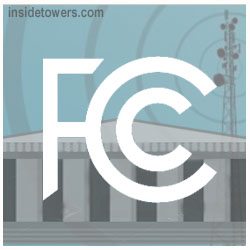FCC Chairman Ajit Pai said Thursday the agency proposes that satellite companies be compensated a total of $9.7 billion for vacating the lower portion of the C-band spectrum early so it can be auctioned this year for wireless use. That set off a firestorm of reaction.
He acknowledged in his speech before the Information Technology & Innovation Foundation, a Washington, D.C. think tank, that some may say that number is too high, and others too low.
Soon after his address, Sen. John Kennedy (R-LA), who’s been pressing the agency for conducting a public, rather than a private, spectrum auction, said it was too high. In response, a Commission official reiterated to reporters what Pai said earlier, that, “We respect Kennedy’s contribution. He’s right to call for a public auction. We respectfully believe this is the right number.”
“We believe the satellite companies will have a financial incentive to accept the payments and move by the deadline,” said the official. Pai said the agency estimated the relocation costs for the incumbent satellite companies at between $4-5 billion. Speed is essential because the agency wants to begin the auction for licenses in the lower portion of the band on December 8.
Pai said the number came about when the agency tried to figure out what the value of the spectrum would be to prospective bidders if they, “had to go to a free market transaction.” Pai made clear the incentive payments would be paid by the winning bidders, not the FCC.
The C-Band Alliance is comprised of the largest satellite companies in the 3.7 GHz to 4.2 GHz band – Intelsat, SES and Telesat. It has not yet said whether its companies believe that’s the right figure, nor whether they can meet the deadlines to receive the accelerated payments.
The CBA called Pai’s comments “a significant development” in the proceeding. “The imminent issuance of the draft order reflects the tireless efforts of many over the past several years to ensure that this critical spectrum comes to market safely, quickly, and efficiently. We look forward to reviewing the draft order, once issued, to place Chairman Pai’s comments in full context.”
In order to get the incentive payments, the satellite companies must clear the lower 100 MHz of the C-band in 46 of the top 50 Partial Economic Areas by September 2021, and the remaining 180 MHz of the C-band by September 2023. If they cannot meet the deadlines, the lower portion of the band must be cleared by September 30, 2025. The satcos must tell the FCC by June 12 if they can meet the accelerated deadlines, according to agency officials.
A “relocation” officer would be appointed to oversee the technical aspects of the satellite companies’ move to the upper portion of the band. If a sufficient number of satcos opt into the accelerated move, they would form a search committee, “to choose a relocation coordinator who can get the job done quickly ”and for a reasonable cost,” an agency official told Inside Towers. If not, then the agency “would procure one,” the official said.
The NAB’s members would be affected by the proposal. Stations are the satellite companies’ customers; the satcos use the C-band to distribute broadcast programming. The satcos will need to be reimbursed for the cost of manufacturing and launching new satellites and potentially moving customers from their existing transponder(s) to a new one, either on the same satellite or a different one. Each move must then be supported at all relevant receive earth stations. The CBA anticipates needing to install specific RF filters on approximately 35,000 antennas to prevent interference from the wireless licensees who would be adjacent to them on the band.
In response to the draft proposal, NAB EVP Communications Dennis Wharton said the news “marks an important step towards ensuring a stable C-band ecosystem following reallocation – one that makes significant spectrum available for mobile use while protecting content distribution relied upon by hundreds of millions of Americans today. In this and other spectrum proceedings, NAB has played a leading role developing constructive solutions that provide meaningful benefits to all stakeholders. We look forward to reviewing details of [the] plan and working with the FCC towards a solution that benefits both current and new users.”
Pai circulated the details of the C-band proposal among his fellow Commissioners Thursday. He’s slated the plan for a vote on February 28.
By Leslie Stimson, Inside Towers Washington Bureau Chief





Reader Interactions